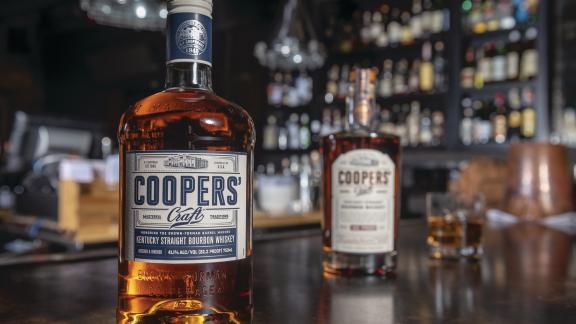
Craft bourbon has seen a surge in popularity in recent years, as whiskey enthusiasts seek out unique and flavorful small-batch offerings. Distillers who specialize in craft bourbon take great pride in their work, often using traditional methods and high-quality ingredients to create spirits that stand out from mass-produced alternatives. In this guide, we will explore the art of craft bourbon and provide an overview of the process involved in small-batch distilling.
The History of Craft Bourbon
Craft bourbon has a rich history that dates back to the early days of American whiskey production. In the late 18th century, Scottish and Irish immigrants brought their distilling traditions to the United States, laying the foundation for the bourbon industry we know today. Over time, small-scale distilleries began to emerge, each with its own unique approach to crafting high-quality spirits.
Key Points:
- Craft bourbon has roots in traditional whiskey-making techniques brought over by European immigrants.
- Small-scale distilleries played a crucial role in the development of craft bourbon.
- Each craft distillery brings its own unique flavors and processes to the art of bourbon-making.
The Craft Bourbon Distilling Process
Small-batch distilling involves a meticulous process that requires attention to detail and a passion for the craft. From selecting the grains to bottling the finished product, every step plays a crucial role in creating a premium bourbon that stands out from the crowd.
Key Steps in the Distilling Process:
- Grain Selection: Craft distillers carefully choose a blend of grains, including corn, rye, and barley, to create a unique flavor profile.
- Mashing: The grains are ground into a coarse meal and combined with water to create a mash, which is heated to convert the starches into fermentable sugars.
- Fermentation: Yeast is added to the mash, and the mixture is allowed to ferment, producing alcohol and developing complex flavors.
- Distillation: The fermented mash is distilled in copper pot stills or column stills to separate the alcohol from the impurities, resulting in a clear distillate known as "white dog."
- Barrel Aging: The white dog is transferred to charred oak barrels, where it will mature and develop rich flavors over time.
- Bottling: Once the bourbon has reached its desired aging level, it is filtered and proofed before being bottled and labeled for sale.
The Importance of Quality Ingredients
Craft bourbon distillers place a strong emphasis on using high-quality ingredients to create a superior product. From locally sourced grains to pure water sources, every component plays a role in shaping the final flavor profile of the bourbon.
Key Ingredients for Craft Bourbon:
- Corn: The primary grain used in bourbon production, corn adds sweetness and depth to the spirit's flavor profile.
- Rye: Rye imparts a spicy and robust character to bourbon, balancing out the sweetness of the corn.
- Barley: Barley helps to promote fermentation and adds maltiness to the bourbon's taste.
- Water: Pure water is essential for diluting the bourbon to its desired proof and ensuring a smooth finish.
- Yeast: Different strains of yeast can influence the aromas and flavors produced during fermentation, leading to a diverse range of bourbon styles.
Small-Batch Distilling vs. Mass Production
One of the main appeals of craft bourbon is the contrast it provides to mass-produced alternatives. While large distilleries focus on efficiency and consistency, small-batch distillers prioritize quality, creativity, and innovation. This hands-on approach allows craft distillers to experiment with unique ingredients and techniques, resulting in small-batch bourbons that offer a truly one-of-a-kind drinking experience.
Key Differences Between Small-Batch and Mass Production:
- Batch Size: Craft distilleries typically produce smaller batches of bourbon, allowing for greater control over the final product.
- Aging Process: Craft bourbons are often aged for longer periods in smaller barrels, intensifying the flavors and creating a more complex profile.
- Handcrafted vs. Automated: Craft distillers often rely on traditional methods and hands-on techniques, while mass producers use automated systems for efficiency.
- Unique Offerings: Small-batch distillers are known for their innovative spirits, experimenting with different grains, barrel types, and aging techniques to create distinct flavors.
Appreciating Craft Bourbon
As the popularity of craft bourbon continues to grow, more and more whiskey enthusiasts are discovering the artistry and expertise that goes into each small-batch bottle. From the careful selection of ingredients to the hands-on distilling process, craft bourbon offers a unique and authentic drinking experience that celebrates tradition and innovation in equal measure.
Tips for Enjoying Craft Bourbon:
- Experiment with Different Brands: Explore a variety of craft bourbon distilleries to discover new flavors and profiles.
- Try Different Aging Levels: Compare younger and older craft bourbons to appreciate how aging impacts the spirit's taste.
- Enhance with Food Pairings: Pair craft bourbon with complementary foods to enhance the flavors and create memorable dining experiences.
- Visit Distilleries: Take a tour of craft distilleries to learn more about the production process and meet the people behind your favorite bourbons.
